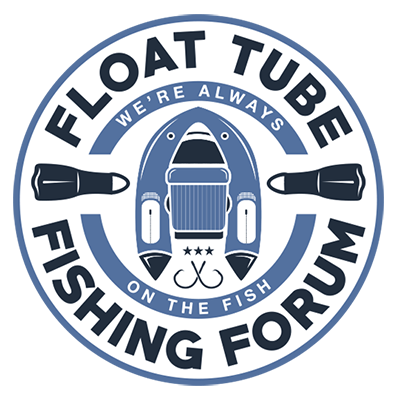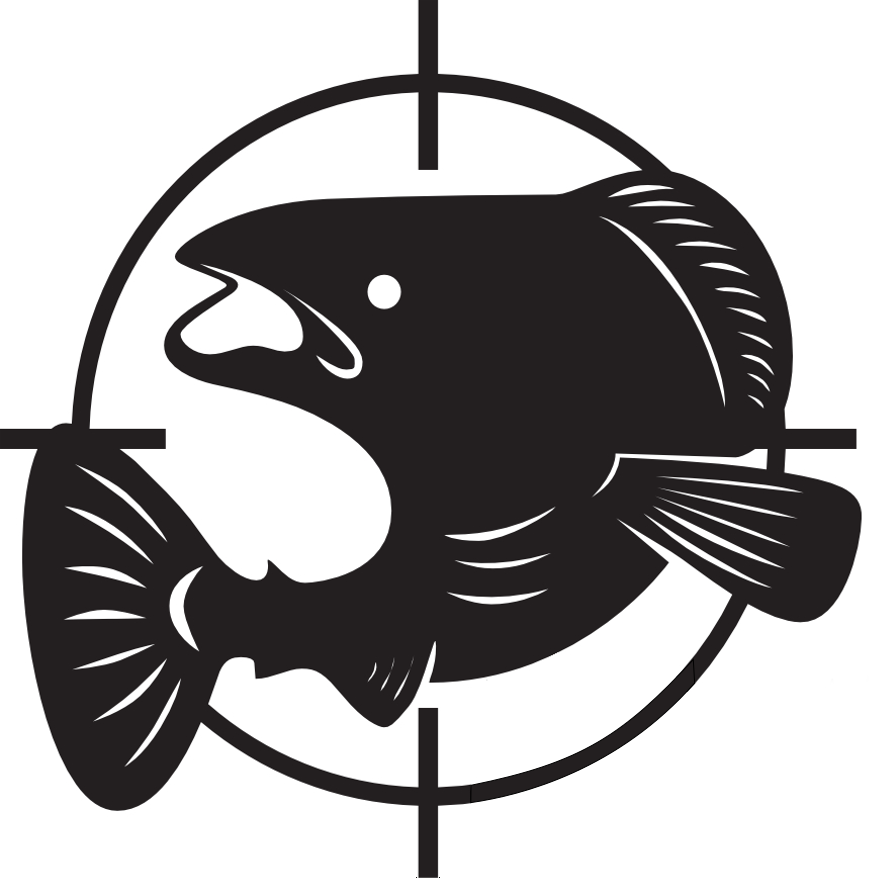An article on the Float Plus Website shared with me so I thought I would share with you.
[You must be registered and logged in to see this link.]
‘GO WHERE NO BELLYBOATER HAS GONE BEFORE’
‘Go where no bellyboater has gone before’
Electric bellyboating
Go where no bellyboater has gone before
Now that the season is open again and the water temperature is rising, the time has come for fanatical bellyboaters. However, now that the fish are more active, the big disadvantage is that the constant changing of location with a bellyboat is not always pleasant, wind, distance and limited speed can play a part. A revolutionary invention by Tom’s fishing buddy, offers the solution for these problems!
these problems!
No one knows who was the first to sit in a bellyboat, but there are
quite a few theories about it. Was it a farmhand in the US who spent his spare hours on the farm pond in a tractor tyre? Was it a Californian surfing dude, who saw fish below him while surfing in the late 1950s and then decided to hoist himself and his rods into a car inner tube and take to the open sea? Or maybe it was a Dutchman, because in the Spaarnestad Collection of the National Archives there is a photo from 1915, in the category ‘weird vehicles’. According to the caption, it is of a man demonstrating ‘a pneumatic sports fishing and hunting boat’ on the IJ River in Amsterdam: ‘His legs stick out from under it, encased in boots’. The photo was published at the time in the magazine Het Leven. Illustrated, which was in fact a tabloid…
Whatever the case may be, a lot has changed in the past 70 years in bellyboat land. Around the end of the 1940s, the very first commercial belly boat appeared on the market: the Float-n-Tote Tube, from the Tucker Duck & Rubber Company in the USA. In fact, they were tractor inner tubes, covered with canvas. You could stand in the middle of it and, thanks to special shoulder straps, you could then also walk around with it, because that was one of the main purposes of this very private belly boat: it allowed the wading fishermen to safely pass deeper parts of the river. It was only in the 1950s that bellyboats became a little more luxurious: bags were then fitted and fishing rod holders were installed. In the following decades, people began to experiment with materials.
The canvas was far too hard to maintain and weighed like lead, so alternatives were sought and found. If you want to know the details, you should read Bob Wiltshire’s interesting piece about the history of the bellyboat.
When I started bellyboating, over 15 years ago now, you could choose between a U-shaped boat and a round one. They had one thing in common: you were up to your waist in water – hence the name ‘bellyboat’, which was used at the time. Later models did away with that: you came to sit ‘high and dry’ – ‘Hi & Dry’ was the name of one of the most famous boats of the time – with only your calves under water. That was a little more wind-sensitive, but a lot more comfortable, especially when boarding and on cold days. About five years ago came the “tubeless revolution”: the vulnerable bladders disappeared and from now on bellyboats were made of a very strong PVC-like material, a bit like that of a Zodiac. The first versions were extremely heavy, but nowadays these things are available in weights of up to six kilograms. I myself participated in the development of the Floatmaster Ultralight and it is light yet extremely strong.
Nowadays, bellyboats are anything but ‘weird vehicles’. More and more often, you see them floating around on our waters. On smaller lakes, but also on the largest waters, such as the Hollands Diep, the Haringvliet and the Randmeren, and on the rivers, these floating armchairs have become a normal sight. On Facebook, bellyboat forums are springing up like mushrooms, and more and more competitions are being organised, up to an NKS and competitions for specific species of fish.
Bellyboat fishing is clearly on the rise, and rightly so! It is a fantastic way of fishing, which has a number of significant advantages. A bellyboat is much cheaper than a boat, both in purchase and in maintenance. You don’t need a shed, tow bar or 4×4 for it either. You can fish in places where no boats can go because there is no ramp, or because they are too shallow. You can fish extremely precisely because you don’t drift as much as with a boat. After you have gained a little experience, you can use the ‘leg motor’ without thinking and fish a slope with pinpoint accuracy. You are more discreet, because your volume is much smaller than in a boat and because you produce less unnatural noise than when you are pounding aluminium or polyester. I suspect that animals sometimes think we are a swan or something like that, because more than once I have noticed how close you can get to water birds or carp, for example, before they make off with their fins. A friend of mine even had a beaver come and personally chase him away from his territory! Don’t forget your sports nutrition bars! And if you have come to land at the bottom of a river with a little wind, it is sometimes a crime to paddle back. It has happened to me more than once that I just couldn’t do it and then I decided to walk back with the bellyboat on my back…
My bellyboat fishing buddy Maikel Lambregts has been a bellyboat fanatic in heart and soul for many years. Several times a week he can be found on the water to hunt his favourite fish: zander. He is a friendly and helpful person, a bon vivant, an extremely good vertical angler and… just about the handiest person I have ever met. Heated soles for your wadersuit (he described them a few years ago in this magazine), an ultralight support for your fish finder, a home-made shad: every season he surprises me with one of his new inventions. A few years ago he suddenly came up with
A MAN WITH A PLAN
.
Bellyboats, however, also have disadvantages. Major disadvantages even. You have to be spot-on, because your action radius is limited. A quick look half a kilometre away is out of the question: it costs you a lot of time and sore muscles. And believe me, anyone who has ever had cramps in both calves will not want to go through that again. Also fishing techniques that require some speed are not very practical. A round of smooth trolling? Forget it…
A snail’s pace is possible, but you can’t keep up with 3 kilometres per hour. Diagonals at speed when there is no wind? I wish you much strength. It’s all right, but fishing is starting to look more like a gym than relaxation. Nice vertical fishing on a flowing river? Good luck – but switch on an electric motor on his bellyboat. I laughed at him, with his hideously heavy semi-attraction battery in the back and the half-hour’s work it took him to mount the thing – but despite that, at the end of a windy fishing day I had to admit that I could see the point.
Maikel continued to brood on his idea and worked it out more and more. His engine became more and more ingenious (with a rotary knob instead of a lever, for example), but it was still too much of a hassle for me. After he got hold of a 3D printer, his project gained momentum.
He made a lightweight motor that was no longer mounted at the back of the bellyboat, but underneath it. He could control the motor steplessly with a switch, which he connected to the motor with a cable. The next step was to make his remote control wireless, and to extremely reduce the weight of the battery by starting to work with lithium ion batteries that he stored in a waterproof case.
By 2015, he had two of these things ready (I told you: he is very nice and had also made one for his fishing buddy!), which were tested extremely thoroughly for two years. Maikel had a dream: to bring his invention to the market so that the whole fishing world could enjoy his beloved bellyboat fishing – including people who are physically challenged. Only after these two years was he fully satisfied with his invention, so that he could confidently start producing and selling it on a large scale.
Float Plus was born – a brand new company in the angling world whose main product is a powerful, sturdy, user-friendly and ultra-light electric motor.
REVOLUTION IN BELLYBOATLAND
I was fortunate enough to be able to accompany Maikel on his test-fishing days on quite a few occasions and can therefore say that I know the possibilities and limitations of it very well. I can be brief about the limitations: there are none. Of course, putting this engine next to a 50 HP petrol engine on a big motorboat will get you nowhere, but that is not a fair comparison. However, if you think in terms of what a bellyboat can do as standard, then the possibilities have become extremely greater.
We have spent long, long days verticalising on big water with strong waves and even currents – such as the Haringvliet – without getting tired. A salient detail: with a bellyboat we had much less trouble with wind and waves than a normal boat, so we could go out (in a life jacket of course: safety first!) when most people were forced to stay at home.
We fished the fast-flowing Meuse River without having to pinch ourselves to death in order to stay on the spot. We could get to places that were kilometres from the nearest embarkation point without spending half the day travelling. In fact, we covered that distance trolling crankbaits at four kilometres per hour and even caught some pike in the process!
We did the same on monotonous canals: just dragging the lakes. If the pike-perch were inactive again in winter, we decided to speed-diagonalise: a technique that can often make them suddenly aggressive. They don’t take the bait because they are hungry, but as a reflex – the Americans call it ‘reaction strikes’. It worked amazingly well: we lay down parallel to each other to follow the banks of the lake, each keeping a different depth. In no time at all, we knew where to look for the spiny creatures. If we caught a few in a row, we would carefully comb the spot at a very slow pace, and that usually yielded the necessary fish…
I can honestly say that I feel severely handicapped nowadays if I don’t have one of these motors under me when I’m bellyboating. Thanks to Maikel’s invention, the whole bellyboating scene will never be the same again!
SOMETHING ABOUT A FISHING DAY
One has to have experienced it to fully understand, and so I want to take you on the last fishing day of last season, at the end of March 2017, so you can read how different my bellyboat fishing days look these days. Maikel and I decided to fish on the Randmeren. There is quite a lot of bellyboating here, but then almost always in the same zones because you can’t comfortably get on the water as a bellyboater in very many places. In a few minutes our boats are ‘ready for action’ and ‘off we go: go where no bellyboater has gone before’ (you heard it: I felt hip). We follow the channel for a kilometre or so. It is windless, so we can easily reach a speed of five kilometres per hour, but we find 3.5 to be just fine for two fat crankbaits.
Unfortunately, the pike are not interested in our trolled baits. We arrive at a nice shallow side with reed beds. I know this area well because I fish it regularly from my boat: especially with jerkbaits, there is sometimes good business. I keep the boat in the channel and cast as far as I can into the shallows. Sometimes the strikes come from the farthest part of my cast. This approach produces two fish, which come from about 80 cm of water. I decide to sail up the shallows. I can’t do that with the boat (I’m not tired of my propeller), but this bellyboat motor has a depth of 26 cm so I have nothing to fear. After all, my legs hang just as deep in the water as the propeller: so I am warned in time if I really threaten to run aground. By going so shallow, I can cast right up against the reeds, which I never manage to do from the boat – and yes, there turns out to be another nice pike! We return to the deep: would they be interested in a shad hopping along the slope?
The wind has picked up a little, but I set the motor to ‘kill’ the wind so that I remain perfectly in place: ideal for this light-headed, casting fishery. With a dull thump on my rod tip, the biggest pike of the day arrives; after a tough drill it turns out to be around one metre long.
In the meantime, Maikel has started vertical fishing at a snail’s pace: up and down the slope. He only uses his flippers to steer, the motor does the rest. He is rewarded for his secure fishing with a pike that flirts with the metre mark. When I write it all down in a few sentences, it seems as if we were catching excellent fish, but that is not the case: we have been doing the better part of the day and have caught a handful of fish. That’s sometimes different on this lake…
The fish we caught were completely full of leeches, so we know they are flat on the bottom. I decide to backtroll, a technique that Henk Simonsz has already written about in this magazine (and in his book) and that Wilfred van Nunen showed me some years ago during a fishing day on the lower rivers.
I have already experienced the truth of what both gentlemen told me on several occasions: on those days when the fish lie tight to the bottom, a slowly shuffling, not frivolously hopping, large shad on a heavy lead head is often the only thing they cannot resist. I make metres, many metres – neatly along the edge of the channel. And then there comes another blow…
The fish doesn’t take runs, but punches – crazy behaviour for a pike, flashes through my mind. After a rather long drill a cockscomb breaks through the surface.
the surface: a huge, heavily-built zander has grabbed the Yolo shad and is now looking at me in a very foul way…
I’m on a cloud: what a mighty animal! I’m grinning from ear to ear when Maikel shoots the pictures, and that grin won’t disappear from my face until we’re relaxed, chatting with our flippers above the water, making jokes, enjoying the setting spring sun – while the motor under our buttocks brings us sweetly buzzing to our boarding position…
Do you now understand why I am so fond of this system, and so proud of my fishing buddy, who, a century after the Amsterdam ‘bellyboat’ with which I started this article, has once again developed a ‘weird vehicle’ that was invented entirely in the Netherlands?
Tom Sintobin
[You must be registered and logged in to see this link.]
‘GO WHERE NO BELLYBOATER HAS GONE BEFORE’
‘Go where no bellyboater has gone before’
Electric bellyboating
Go where no bellyboater has gone before
Now that the season is open again and the water temperature is rising, the time has come for fanatical bellyboaters. However, now that the fish are more active, the big disadvantage is that the constant changing of location with a bellyboat is not always pleasant, wind, distance and limited speed can play a part. A revolutionary invention by Tom’s fishing buddy, offers the solution for these problems!
these problems!
No one knows who was the first to sit in a bellyboat, but there are
quite a few theories about it. Was it a farmhand in the US who spent his spare hours on the farm pond in a tractor tyre? Was it a Californian surfing dude, who saw fish below him while surfing in the late 1950s and then decided to hoist himself and his rods into a car inner tube and take to the open sea? Or maybe it was a Dutchman, because in the Spaarnestad Collection of the National Archives there is a photo from 1915, in the category ‘weird vehicles’. According to the caption, it is of a man demonstrating ‘a pneumatic sports fishing and hunting boat’ on the IJ River in Amsterdam: ‘His legs stick out from under it, encased in boots’. The photo was published at the time in the magazine Het Leven. Illustrated, which was in fact a tabloid…
Whatever the case may be, a lot has changed in the past 70 years in bellyboat land. Around the end of the 1940s, the very first commercial belly boat appeared on the market: the Float-n-Tote Tube, from the Tucker Duck & Rubber Company in the USA. In fact, they were tractor inner tubes, covered with canvas. You could stand in the middle of it and, thanks to special shoulder straps, you could then also walk around with it, because that was one of the main purposes of this very private belly boat: it allowed the wading fishermen to safely pass deeper parts of the river. It was only in the 1950s that bellyboats became a little more luxurious: bags were then fitted and fishing rod holders were installed. In the following decades, people began to experiment with materials.
The canvas was far too hard to maintain and weighed like lead, so alternatives were sought and found. If you want to know the details, you should read Bob Wiltshire’s interesting piece about the history of the bellyboat.
When I started bellyboating, over 15 years ago now, you could choose between a U-shaped boat and a round one. They had one thing in common: you were up to your waist in water – hence the name ‘bellyboat’, which was used at the time. Later models did away with that: you came to sit ‘high and dry’ – ‘Hi & Dry’ was the name of one of the most famous boats of the time – with only your calves under water. That was a little more wind-sensitive, but a lot more comfortable, especially when boarding and on cold days. About five years ago came the “tubeless revolution”: the vulnerable bladders disappeared and from now on bellyboats were made of a very strong PVC-like material, a bit like that of a Zodiac. The first versions were extremely heavy, but nowadays these things are available in weights of up to six kilograms. I myself participated in the development of the Floatmaster Ultralight and it is light yet extremely strong.
Nowadays, bellyboats are anything but ‘weird vehicles’. More and more often, you see them floating around on our waters. On smaller lakes, but also on the largest waters, such as the Hollands Diep, the Haringvliet and the Randmeren, and on the rivers, these floating armchairs have become a normal sight. On Facebook, bellyboat forums are springing up like mushrooms, and more and more competitions are being organised, up to an NKS and competitions for specific species of fish.
Bellyboat fishing is clearly on the rise, and rightly so! It is a fantastic way of fishing, which has a number of significant advantages. A bellyboat is much cheaper than a boat, both in purchase and in maintenance. You don’t need a shed, tow bar or 4×4 for it either. You can fish in places where no boats can go because there is no ramp, or because they are too shallow. You can fish extremely precisely because you don’t drift as much as with a boat. After you have gained a little experience, you can use the ‘leg motor’ without thinking and fish a slope with pinpoint accuracy. You are more discreet, because your volume is much smaller than in a boat and because you produce less unnatural noise than when you are pounding aluminium or polyester. I suspect that animals sometimes think we are a swan or something like that, because more than once I have noticed how close you can get to water birds or carp, for example, before they make off with their fins. A friend of mine even had a beaver come and personally chase him away from his territory! Don’t forget your sports nutrition bars! And if you have come to land at the bottom of a river with a little wind, it is sometimes a crime to paddle back. It has happened to me more than once that I just couldn’t do it and then I decided to walk back with the bellyboat on my back…
My bellyboat fishing buddy Maikel Lambregts has been a bellyboat fanatic in heart and soul for many years. Several times a week he can be found on the water to hunt his favourite fish: zander. He is a friendly and helpful person, a bon vivant, an extremely good vertical angler and… just about the handiest person I have ever met. Heated soles for your wadersuit (he described them a few years ago in this magazine), an ultralight support for your fish finder, a home-made shad: every season he surprises me with one of his new inventions. A few years ago he suddenly came up with
A MAN WITH A PLAN
.
Bellyboats, however, also have disadvantages. Major disadvantages even. You have to be spot-on, because your action radius is limited. A quick look half a kilometre away is out of the question: it costs you a lot of time and sore muscles. And believe me, anyone who has ever had cramps in both calves will not want to go through that again. Also fishing techniques that require some speed are not very practical. A round of smooth trolling? Forget it…
A snail’s pace is possible, but you can’t keep up with 3 kilometres per hour. Diagonals at speed when there is no wind? I wish you much strength. It’s all right, but fishing is starting to look more like a gym than relaxation. Nice vertical fishing on a flowing river? Good luck – but switch on an electric motor on his bellyboat. I laughed at him, with his hideously heavy semi-attraction battery in the back and the half-hour’s work it took him to mount the thing – but despite that, at the end of a windy fishing day I had to admit that I could see the point.
Maikel continued to brood on his idea and worked it out more and more. His engine became more and more ingenious (with a rotary knob instead of a lever, for example), but it was still too much of a hassle for me. After he got hold of a 3D printer, his project gained momentum.
He made a lightweight motor that was no longer mounted at the back of the bellyboat, but underneath it. He could control the motor steplessly with a switch, which he connected to the motor with a cable. The next step was to make his remote control wireless, and to extremely reduce the weight of the battery by starting to work with lithium ion batteries that he stored in a waterproof case.
By 2015, he had two of these things ready (I told you: he is very nice and had also made one for his fishing buddy!), which were tested extremely thoroughly for two years. Maikel had a dream: to bring his invention to the market so that the whole fishing world could enjoy his beloved bellyboat fishing – including people who are physically challenged. Only after these two years was he fully satisfied with his invention, so that he could confidently start producing and selling it on a large scale.
Float Plus was born – a brand new company in the angling world whose main product is a powerful, sturdy, user-friendly and ultra-light electric motor.
REVOLUTION IN BELLYBOATLAND
I was fortunate enough to be able to accompany Maikel on his test-fishing days on quite a few occasions and can therefore say that I know the possibilities and limitations of it very well. I can be brief about the limitations: there are none. Of course, putting this engine next to a 50 HP petrol engine on a big motorboat will get you nowhere, but that is not a fair comparison. However, if you think in terms of what a bellyboat can do as standard, then the possibilities have become extremely greater.
We have spent long, long days verticalising on big water with strong waves and even currents – such as the Haringvliet – without getting tired. A salient detail: with a bellyboat we had much less trouble with wind and waves than a normal boat, so we could go out (in a life jacket of course: safety first!) when most people were forced to stay at home.
We fished the fast-flowing Meuse River without having to pinch ourselves to death in order to stay on the spot. We could get to places that were kilometres from the nearest embarkation point without spending half the day travelling. In fact, we covered that distance trolling crankbaits at four kilometres per hour and even caught some pike in the process!
We did the same on monotonous canals: just dragging the lakes. If the pike-perch were inactive again in winter, we decided to speed-diagonalise: a technique that can often make them suddenly aggressive. They don’t take the bait because they are hungry, but as a reflex – the Americans call it ‘reaction strikes’. It worked amazingly well: we lay down parallel to each other to follow the banks of the lake, each keeping a different depth. In no time at all, we knew where to look for the spiny creatures. If we caught a few in a row, we would carefully comb the spot at a very slow pace, and that usually yielded the necessary fish…
I can honestly say that I feel severely handicapped nowadays if I don’t have one of these motors under me when I’m bellyboating. Thanks to Maikel’s invention, the whole bellyboating scene will never be the same again!
SOMETHING ABOUT A FISHING DAY
One has to have experienced it to fully understand, and so I want to take you on the last fishing day of last season, at the end of March 2017, so you can read how different my bellyboat fishing days look these days. Maikel and I decided to fish on the Randmeren. There is quite a lot of bellyboating here, but then almost always in the same zones because you can’t comfortably get on the water as a bellyboater in very many places. In a few minutes our boats are ‘ready for action’ and ‘off we go: go where no bellyboater has gone before’ (you heard it: I felt hip). We follow the channel for a kilometre or so. It is windless, so we can easily reach a speed of five kilometres per hour, but we find 3.5 to be just fine for two fat crankbaits.
Unfortunately, the pike are not interested in our trolled baits. We arrive at a nice shallow side with reed beds. I know this area well because I fish it regularly from my boat: especially with jerkbaits, there is sometimes good business. I keep the boat in the channel and cast as far as I can into the shallows. Sometimes the strikes come from the farthest part of my cast. This approach produces two fish, which come from about 80 cm of water. I decide to sail up the shallows. I can’t do that with the boat (I’m not tired of my propeller), but this bellyboat motor has a depth of 26 cm so I have nothing to fear. After all, my legs hang just as deep in the water as the propeller: so I am warned in time if I really threaten to run aground. By going so shallow, I can cast right up against the reeds, which I never manage to do from the boat – and yes, there turns out to be another nice pike! We return to the deep: would they be interested in a shad hopping along the slope?
The wind has picked up a little, but I set the motor to ‘kill’ the wind so that I remain perfectly in place: ideal for this light-headed, casting fishery. With a dull thump on my rod tip, the biggest pike of the day arrives; after a tough drill it turns out to be around one metre long.
In the meantime, Maikel has started vertical fishing at a snail’s pace: up and down the slope. He only uses his flippers to steer, the motor does the rest. He is rewarded for his secure fishing with a pike that flirts with the metre mark. When I write it all down in a few sentences, it seems as if we were catching excellent fish, but that is not the case: we have been doing the better part of the day and have caught a handful of fish. That’s sometimes different on this lake…
The fish we caught were completely full of leeches, so we know they are flat on the bottom. I decide to backtroll, a technique that Henk Simonsz has already written about in this magazine (and in his book) and that Wilfred van Nunen showed me some years ago during a fishing day on the lower rivers.
I have already experienced the truth of what both gentlemen told me on several occasions: on those days when the fish lie tight to the bottom, a slowly shuffling, not frivolously hopping, large shad on a heavy lead head is often the only thing they cannot resist. I make metres, many metres – neatly along the edge of the channel. And then there comes another blow…
The fish doesn’t take runs, but punches – crazy behaviour for a pike, flashes through my mind. After a rather long drill a cockscomb breaks through the surface.
the surface: a huge, heavily-built zander has grabbed the Yolo shad and is now looking at me in a very foul way…
I’m on a cloud: what a mighty animal! I’m grinning from ear to ear when Maikel shoots the pictures, and that grin won’t disappear from my face until we’re relaxed, chatting with our flippers above the water, making jokes, enjoying the setting spring sun – while the motor under our buttocks brings us sweetly buzzing to our boarding position…
Do you now understand why I am so fond of this system, and so proud of my fishing buddy, who, a century after the Amsterdam ‘bellyboat’ with which I started this article, has once again developed a ‘weird vehicle’ that was invented entirely in the Netherlands?
Tom Sintobin

 Home
Home



















 just kidding.
just kidding.




